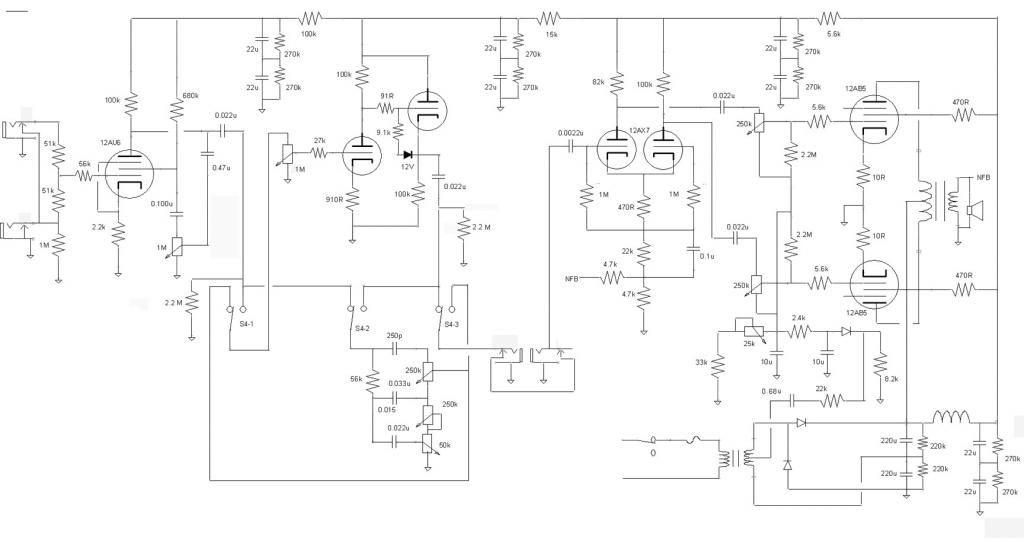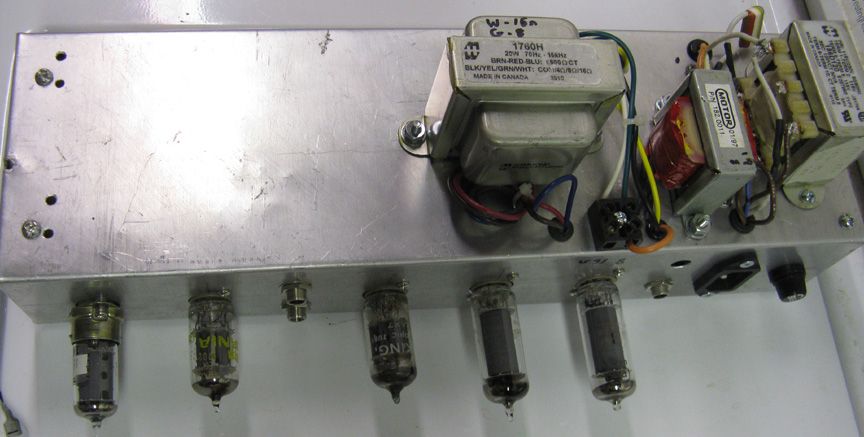Sometimes people find EL84s to be ‘too crunchy’ etc. and prefer 6V6 etc. I have no problem with that of course, but I’d just like to throw in a technical factor which I think is relevant. (All the following figures are just ‘ball park’ – it depends on B+ value etc.)
In rough terms the EL84 is about twice as sensitive as a 6V6 (and 6AQ5). The mutual conductance of an EL84 is around 11 mA/V, while the 6V6 and 6AQ5 are around 4 mA/V. It takes about 15 V swing from grid-limiting to cut-off for an EL84, but about 30 V for 6V6 and 6AQ5.
A typical PI can deliver around 100 V of swing. The upshot of this is that it is ‘too easy’ to massively overdrive EL84s compared to 6V6. Power stage overdrive is generally regarded as good, but my personal opinion is that too much of it is not to most people’s taste.
To test this theory out would require a PI that can deliver a swing of 100 x 30 / 15 = 200 V and then see how those 6V6s sound!
The larger bottle size of a 6V6 is a good thing for heat dissipation and robustness, which are other factors.
In rough terms the EL84 is about twice as sensitive as a 6V6 (and 6AQ5). The mutual conductance of an EL84 is around 11 mA/V, while the 6V6 and 6AQ5 are around 4 mA/V. It takes about 15 V swing from grid-limiting to cut-off for an EL84, but about 30 V for 6V6 and 6AQ5.
A typical PI can deliver around 100 V of swing. The upshot of this is that it is ‘too easy’ to massively overdrive EL84s compared to 6V6. Power stage overdrive is generally regarded as good, but my personal opinion is that too much of it is not to most people’s taste.
To test this theory out would require a PI that can deliver a swing of 100 x 30 / 15 = 200 V and then see how those 6V6s sound!

The larger bottle size of a 6V6 is a good thing for heat dissipation and robustness, which are other factors.
 I've added a couple of sim plots above.
I've added a couple of sim plots above.


Comment